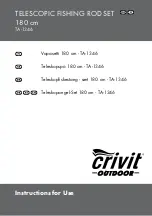
EIS Measurement of Small Impedances – How Should You Hook Up Your Cell?
84
The Reference 3000 has two cell cables, so that we can separate the current-carrying wires from the sense
wires. The current-carrying pair is in the Counter/Working Cable and the sense pair is in the Sense Cable.
Twist the Sense Wires
The concept of a magnetic-loop probe is useful in understanding why twisted wire minimizes magnetic pickup.
A loop of wire in a changing magnetic field sees a loop voltage proportional to the area of the loop.
Twisting the sense wires together helps in two ways, even though twisting the wire forms loops:
The twisted wires are forced to lie close to each other, minimizing the loop areas.
Adjacent loops pickup voltages of opposite polarity, resulting in cancellation.
How Should You Hook Up Your Cell?
Always use four-terminal connections to the cell. Try to avoid conductors that are shared by both the current-
carrying path and the voltage-sensing path.
If your experiments are in the region where mutual inductance may limit performance, keep the voltage-
sensing leads in a twisted pair and the current-carrying leads in a different twisted pair. Keep the pair of sensing
wires far away from the pair of current-carrying wires. Try to arrange each pair so that they approach the cell
from opposite directions.
These recommendations are summarized in the Figure below.
Figure 11-2
Wiring Recommendations
System
Cell
Ma
x
imiz
e
Minimize
Current Carrying Leads
Sense Leads
i
i
















































